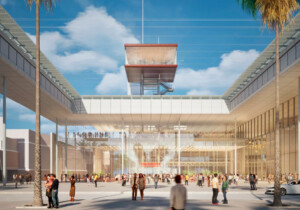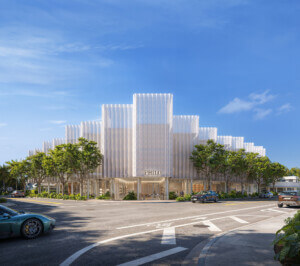When it comes to development, said Allan Shulman, principal of Miami-based Shulman + Associates, “Miami has always been a true ‘boom and bust’ city, with the cycles highly compressed in comparison to other North American cities.”
In that sense, then, today’s construction extravaganza is just another iteration of a familiar pattern. One thing that is different, however, is that the current trend in South Florida development favors urban over suburban growth patterns. “Miami is filling in and densifying in a continuous arc from Brickell up to Edgewater, and along major road and water arteries toward the west,” noted Shulman. “Urban life will be better and more connected in the urban core.”
Next month, Shulman will lead an exclusive field trip through two local development hot spots—downtown Miami and the Brickell Corridor—as part of the Facades+ Miami conference. “The downtown core is in the midst of a renaissance,” he explained. “It has had a kind of low-key vibrancy in the 20 years I’ve lived in Miami, typically extremely busy during the day and quiet at night.” That has begun to change recently with the opening of new restaurants, cafes, grocery stores, creative offices, and cultural destinations including the Miami Center for Architecture + Design. “There is great building stock downtown, and it’s fantastic that many buildings are finding new lives with new uses,” said Shulman.
The pace of growth in the Brickell area is even more remarkable. “Between megaprojects like Brickell City Centre and the crowd of towers rising to the south, it’s just exploded,” said Shulman. “It seems that most open or underutilized lots are in some phase of development.” Much of the new construction, he observed, includes a residential focus. And because both downtown and Brickell offer easy access to rail transit, “it will be interesting to see if this transit-oriented development sets new patterns for the rest of the city,” he said.
As is often the case, Miami’s present building boom benefits some segments of the local population more than others. “There is little development in the middle-tier market, and for affordable housing,” said Shulman. “We still haven’t broken through significantly to housing types other than single family homes and high-rise towers. It’s a mixed story.” Yet he remains optimistic about the overall picture. “Miami continues to be a vibrant urban and architectural laboratory,” he said. “Developers and architects take risks, and there seems to be a positive reception in the market.” In addition, “Miami has been bullish on infrastructure lately,” observed Schulman, with new rail extensions to the airport, and a second multimodal central station being built downtown. “Add to this the new port tunnel, museums, park improvements, river and bay walks, and we are starting to build a more robust civic realm,” he said. “Way more needs to be done, but the trend has been positive.”
Join the conversation about present and future development in Miami and beyond at Facades+ Miami September 10–11. See a complete symposium agenda and sign up for a field trip on the conference website.
*Seats to both tours are extremely limited—get your tickets today!










